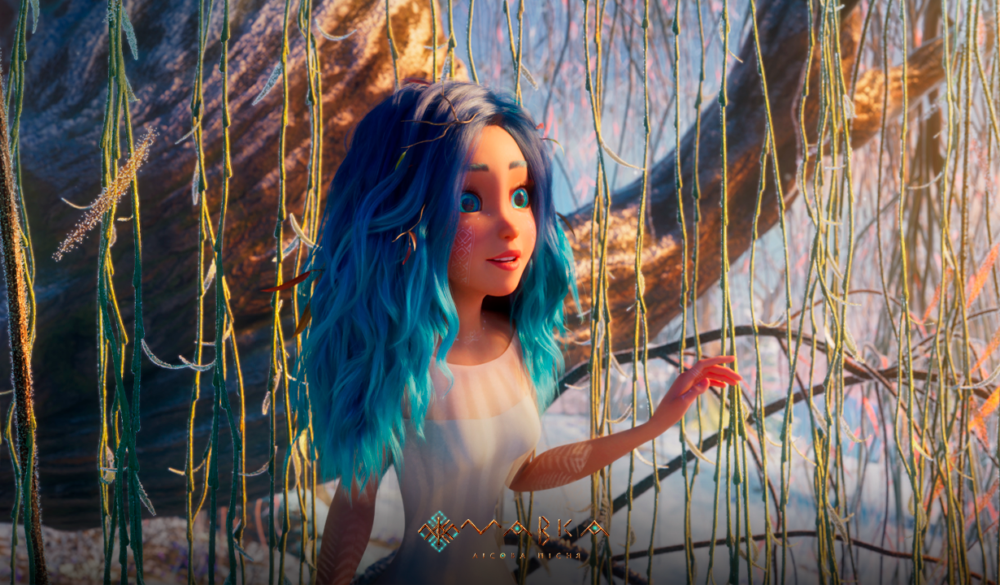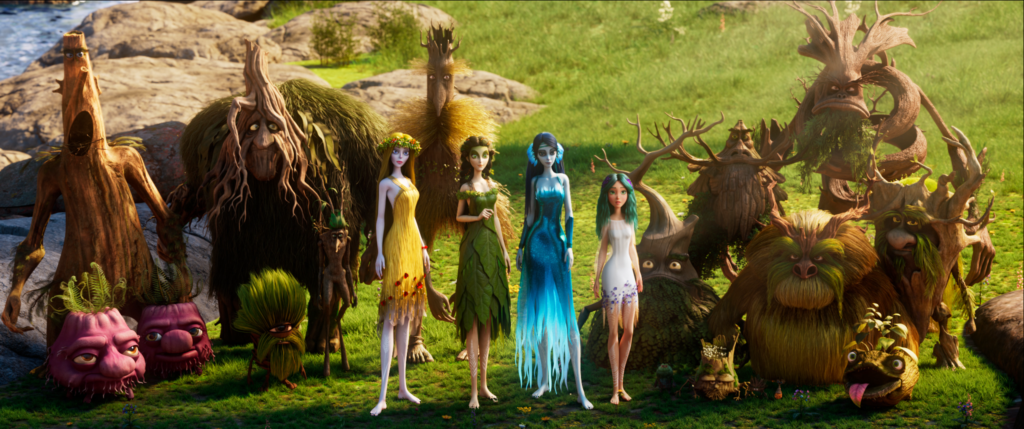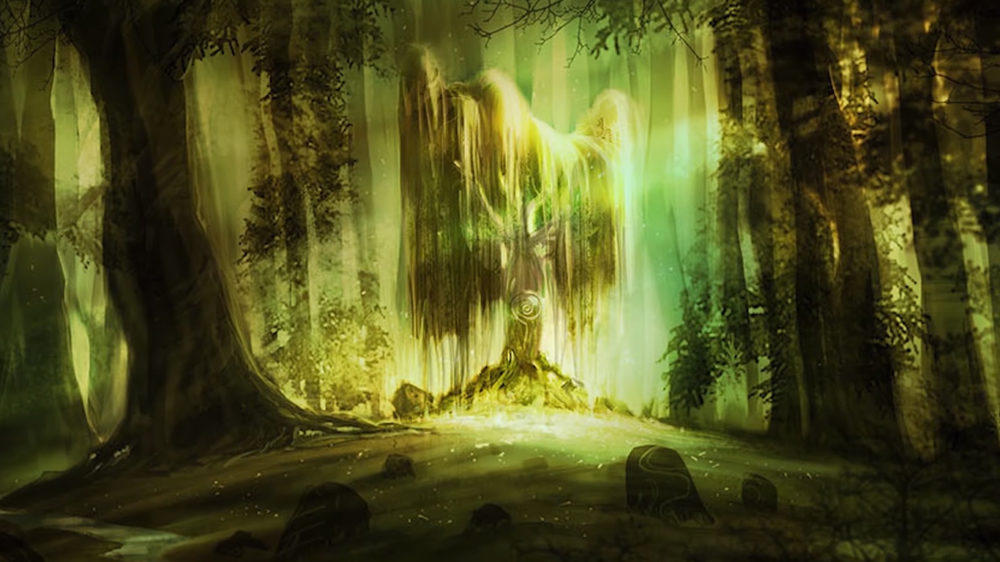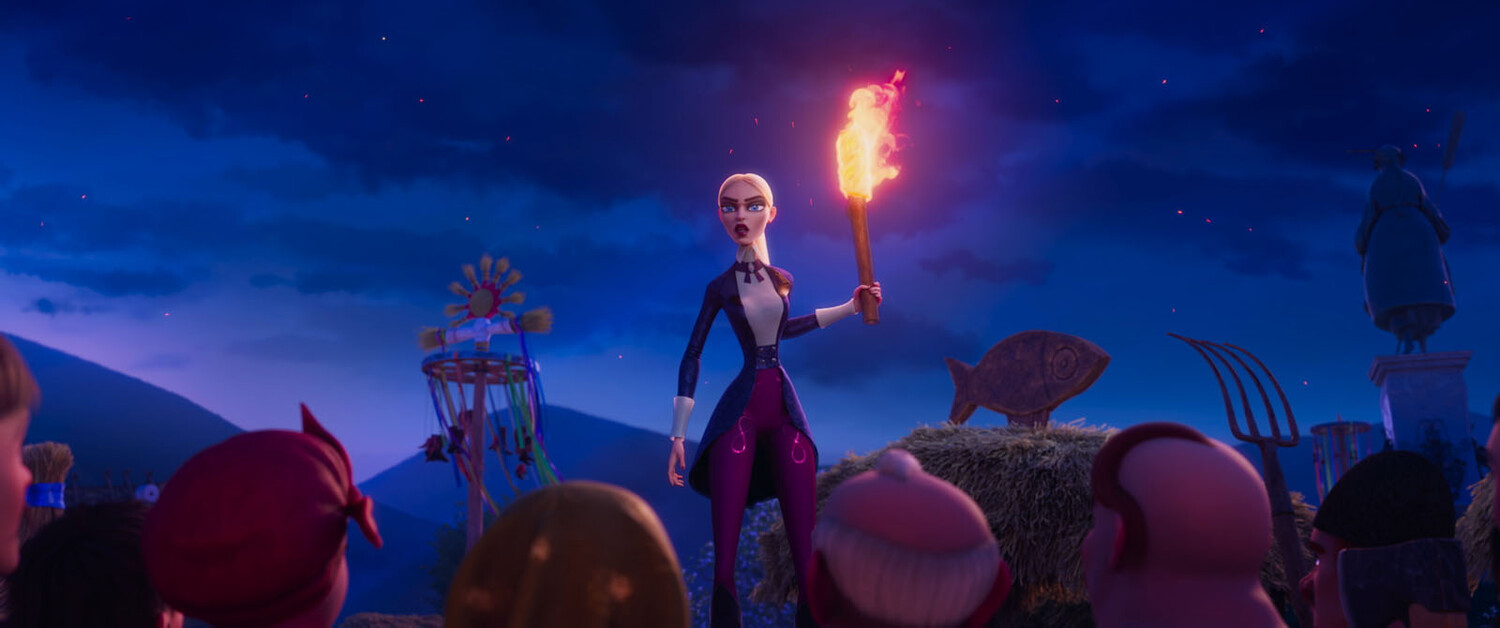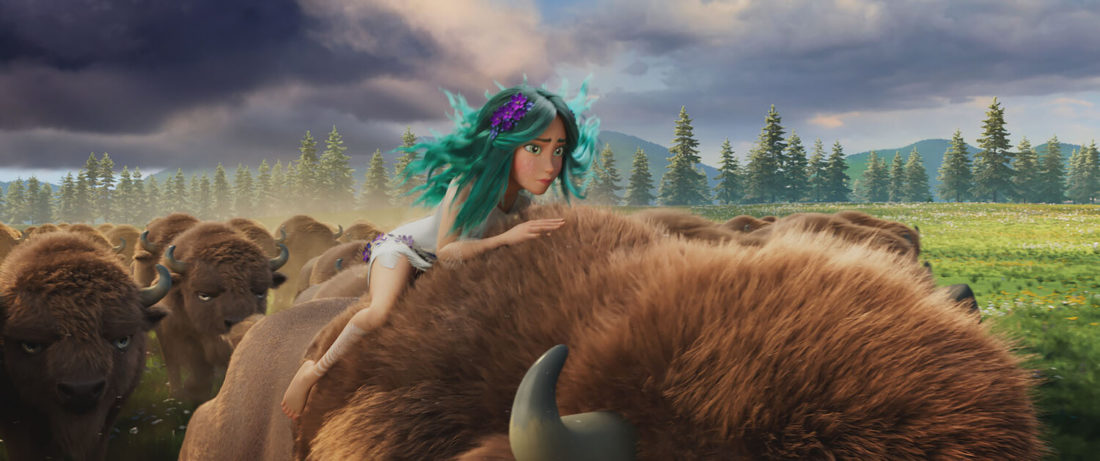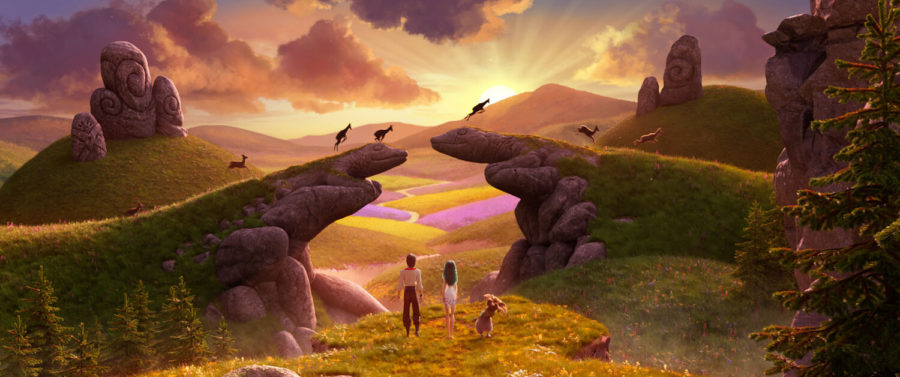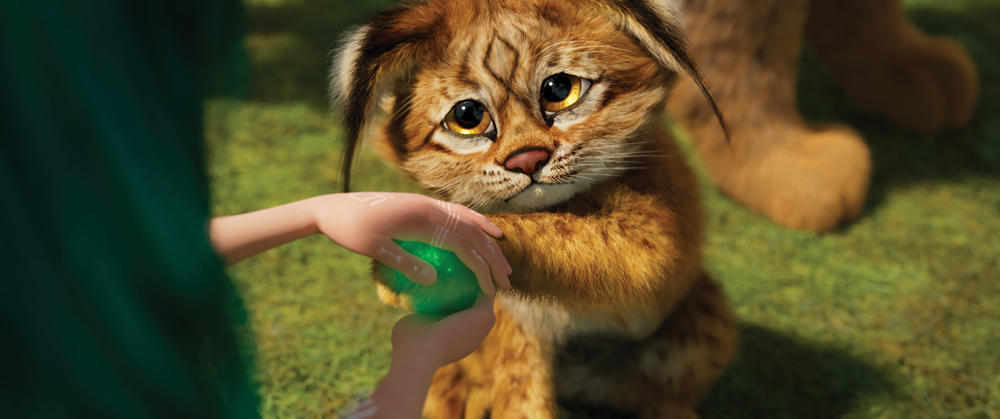Mavka. The Forest Song is the first animated film from Ukraine that has garnered international attention. It has made significant inroads globally, with distribution rights purchased by more than 80 countries.
In Ukraine, the film collected a record UAH 24.9 million ($675,000) in the first weekend of its release, becoming the highest-grossing film among domestic releases.
In France, Mavka took the top spot on the first day of its release, outperforming the film Shazam! Fury of the Gods. It also became the No.1 film of the weekend at the box office in Bosnia-Herzegovina and in Croatia. In Romania, the movie was ranked the No. 2 film of the week, while in Spain, it remained in the Top 5 highest-grossing films for two weeks in a row.
Produced by Animagrad Animation Studio in Ukraine, Mavka is based on the fairy tale drama Forest Song (1911) by Ukrainian poet Lesia Ukrayinka. Although the characters might resemble those in other popular animations, they are deeply rooted in Ukrainian folklore and mythology, which inspired Ukrayinka’s original narrative.
From Lesia Ukrayinka’s Forest Song to Animagrad’s Mavka
Lesia Ukrayinka's writings (born Larysa Kosach, 1871-1913), were predominantly tragic. For instance, Cassandra (1907), inspired by an ancient Greek myth, tells the tale of a prophetess who foresaw the fall of Troy but was ignored. Similarly, In the Wilderness
(1907) unravels the tragic fate of an artist in a Puritan community, misunderstood by his peers due to his unorthodox interpretation of Christianity.
In line with her other works, Forest Song is also a tragedy, portraying a stark disconnection between two realms: the elevated world of nature and art (Ukrayinka sees nature and art in unity rather than in opposition) and the mundane world of daily worries.
Evidently, the animated adaptation of this play, designed for children, diverges from the original’s tragic trajectory. Instead, Mavka emphasizes the enduring tale of true love, which is the starting point of Ukrayinka’s Forest Song.
In the original play, the day-to-day of village life distracts villager Lukash from his romance with the forest creature, Mavka. However, in the animated version, no such betrayals occur, even though the animated Mavka is led to believe otherwise.
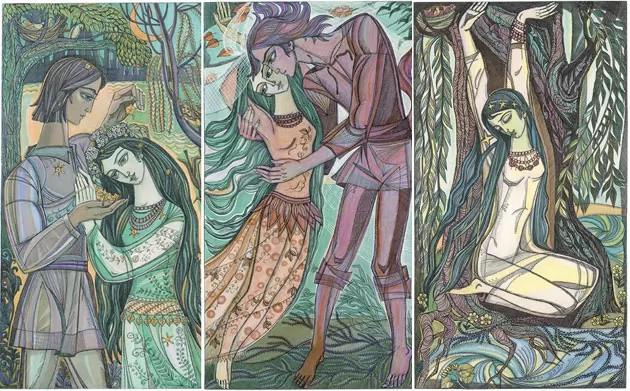
There is another intriguing contrast between the two works. While the primary conflict in Ukrayinka’s play arises between the forest and the village, the film reinterprets this conflict as one between the forest and the city. This shift reflects the demographic changes that have taken place since the play was written. While Ukraine’s population in the early 20th century was primarily rural, today it is predominantly urban. For Ukrayinka, the village portrays agriculture as a potential threat to nature, whereas for Animagrad, the village serves as a conduit between the forest and civilization. Consequently, Lukash’s character exemplifies this contemporary understanding of the village.
While some will notice similarities between the play and the film and others will highlight their significant differences, it is crucial to underscore the shared origin of the stories: Ukrainian folklore and mythology.
Mavka’s main characters are based on Ukrainian folklore and Lesia Ukrayinka’s work
From an outsider’s perspective, it might seem that Animagrad’s Mavka relies on disposable characters created solely for the film. However, the majority of them are actually derived from Ukrainian folklore or inspired by Ukrayinka’s original drama.
Upon first hearing about mavkas, Ukrayinka found herself entranced by their story. In her own words,
“It seems to me, that I just remembered our forests and longed for them. And then I have always kept that Mavka in my mind, for a long time, ever since you told me something about Mavkas in Zhaborytsia when we were walking through a forest with small but very dense trees. Then in Kolodyazhne, on a moonlit night, I ran into the woods alone (you didn't know that) and there I waited for Mavka to appear. And over Nechimne, I imagined her, as we spent the night there — you remember — with my uncle Lev Skulinsky. Apparently, I already had to write it once, and now for some reason, the ‘right time’ has come — I myself do not understand why. I am fascinated by this image forever,” Ukrayinka wrote in a letter to her mother dated 2 January 1912.
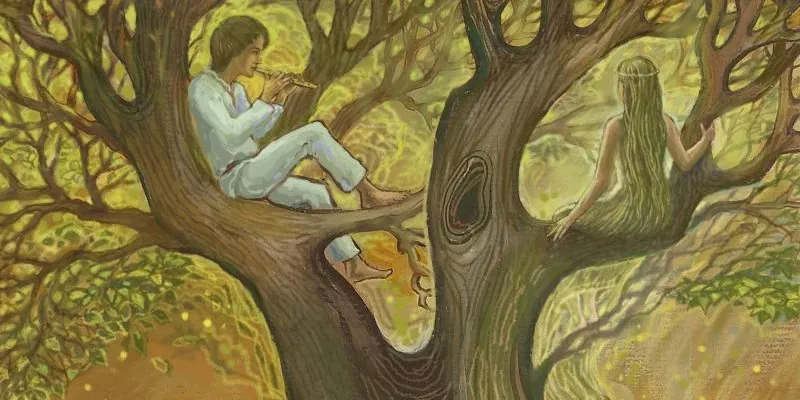
George G. Grabowicz, a professor of literature at the Ukrainian Institute at Harvard University, notes that Soviet authorities consistently selected what they deemed to be the worst works of Ukrainian writers for school textbooks in order to depict Ukrainian literature as provincial, compared to Russian literature. However, they inadvertently chose Forest Song, one of Ukrayinka's best works, increasing its fame.
Rostyslav Semkiv, a literature professor at Kyiv-Mohyla Academy, further elaborates that in Forest Song, Ukrayinka ambitiously sought to construct her own fantasy realm, somewhat akin to J. R. R. Tolkien's world. Had she lived longer, she would have undoubtedly continued to explore this creative direction.
Let’s explore the backgrounds of the main characters in Forest Song and Mavka
.
Mavkas
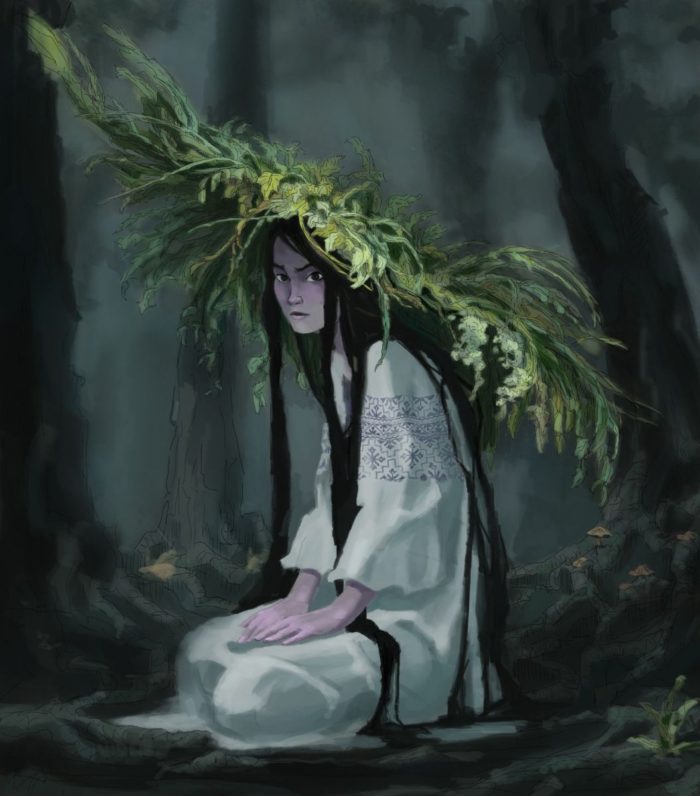
In ancient Ukrainian mythology, mavkas are the souls of children who died unbaptized or were killed by their mothers. They often live in forests and fields. Mavkas were also seen as the restless spirits of young women who ended their lives due to heartbreak or grief for their beloved, refusing to pass into the world of the dead.
After death, a mavka cannot remember her living self or those who wronged her, but she carries a deep sorrow for lost love. The term “mavka” (or “niavka”) likely derives from the common Slavic “nav,” meaning “death” or “dead body.”
Mavkas appeared either as children or beautiful young women with long, flowered hair and dressed in thin, white shirts. Mavkas were beings with sweet, round faces, beautiful and tall in stature. A mavka always wore a floral wreath on her head. However, mavkas also had a more sinister side: they lacked skin on their backs, leaving their internal organs visible from behind. They also cast no shadow.
Mavkas made their homes in forest trees, which became like sisters or mothers to them, or in bushes, in fields, or grass. As soon as the snow began to melt in springtime, they planted flowers near mountain caves. As everything turned green and blossomed, they swung on branches, frolicked in rye fields, picked flowers, wove wreaths, and danced. Mavkas often interacted with mermaids, or “rusalkas.”
On “Mavka’s Easter” (Holy Thursday), mavkas and mermaids wandered through fields and forests. They transformed into humans and even enjoyed ordinary human food.
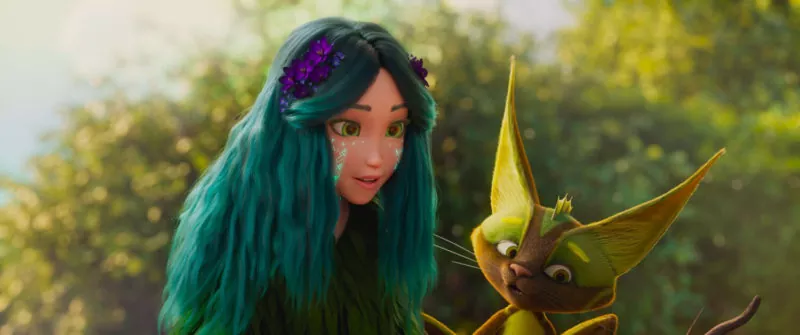
At the beginning of the 20th century, researcher Yuriy Myroliubov recorded the names of 28 “nieces” — his way of referring to mavkas — in several villages of Ukraine’s Podniprovia region.
Among them is Verbytsia, a mavka who resides in and resembles a willow tree, which is called a “verba” in Ukrainian. Similarly, Vyshnytsia inhabits a cherry tree and Dubytsia lives in an oak tree.
Dyvovytsia is a unique forest mavka who only reveals herself when the morning star is visible. It is said that cursed souls often find salvation near her. Then there is Lobasta, the mavka most hostile towards humans. She stands out as the only one among these spirits who is active during the winter, spending her summer in slumber.
In traditional Ukrainian folklore, mavkas were often perceived as malevolent spirits. Ukrayinka, however, reimagined them as spiritual beings unburdened by the mundane concerns of humans. This interpretation of mavkas is preserved in the animated film.
Lisovyk
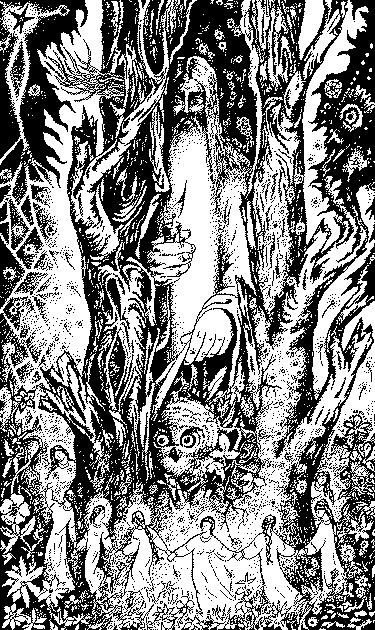
In Ukrayinka’s Forest Song, the lisovyk (forester) is a character who assists the mavka. This means that the film also needed a lisovyk character to further its plot. In any case, the idea of the lisovyk as the spirit and master of the forest also originated in Ukrainian mythology.
Lisovyks live in thick trees or in the hollows of dry trees, and all the forest wildlife obeys them. Often depicted as an old, long-haired man, there are various interpretations of the lisovyk. According to some, he is a benevolent creature who rarely retaliates when faced with human harm. However, he can still be dangerous: someone spending the night at the edge of a forest might fear the lisovyk. And according to other beliefs, lisovyks can cause harm, trying to claim the souls of hunters who renounce God in order to earn game as a reward. They can also try to lure people into the thicket, where they frighten them.

Lisovyks had families, managed households, and lived like ordinary people, but they were descended from female wolves, bears, deer, and so on. When a lisovyk gets angry, the forest mavkas halt their merriment under his menacing gaze. Even the trees bow their leafy branches in his presence, for he is the ruler of the forest. Some believed that lisovyks could be not only male, but also female.
Mermaids (Rusalkas)
In traditional Ukrainian beliefs, the rusalka is a young water beauty who primarily lives at the bottom of a lake or river. Unlike other mermaids, in Ukrainian mythology, rusalkas usually have legs.
There are about a dozen versions of the rusalka’s origins. In all cases, she is someone who died under specific circumstances (for instance, during the Rusalka Week after the Trinity holiday, when she agreed to marry, but died prematurely, or when she drowned).
Rusalkas look the same as they did when their human forms were buried. At night, when the moon rises, rusalkas come to the shore of their lake or river and dance. They lure young children with their singing, then pull them into the water and tickle them. Crosses and wormwood served as protection against rusalkas.
In both the play and the film, like in Ukrainian mythology, rusalkas are portrayed as cunning and unpredictable. Both stories have a Water Rusalka character, a malicious and jealous friend of Mavka’s. Ukrayinka’s play also has Field Rusalka, a true and loyal friend to Mavka.
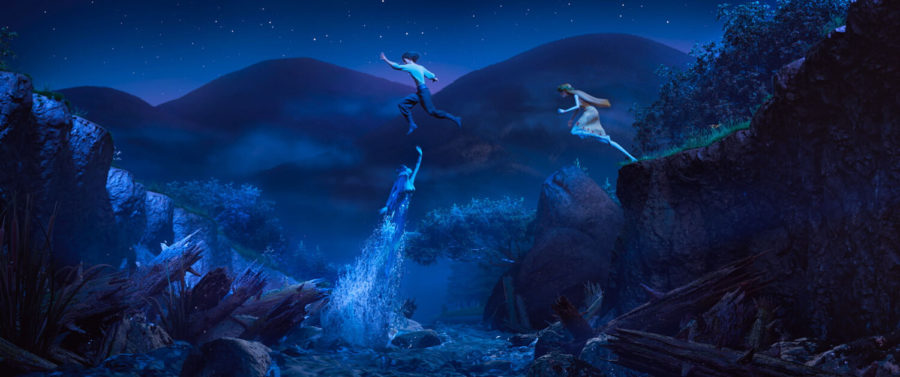
“He Who Dwells in Rock”
Unlike the previous characters, “He Who Dwells in Rock” (Той, що в скалі сидить) is an original demonic character created by Ukrayinka. This character was also carried over into the animated film.
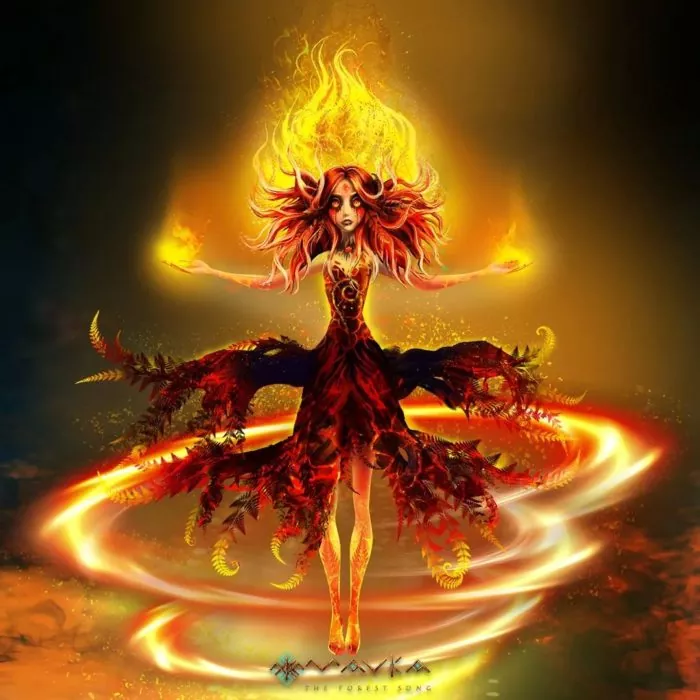
“He Who Dwells in Rock” is primarily depicted by Ukrayinka as an evil spirit. He is a phantom who lives underground where “... quiet, dark waters / calmly sleep, like dead, dim eyes, / silent cliffs stand above them / mute witnesses to events that died.” This spirit of the underworld kills people’s dreams and is a "terrible Mariische," a "fortress of darkness"; a hostile force that kills people's dreams, a spirit of the underworld, a type of devil. In the original story, as in the film, Mavka turns to “He Who Dwells in Rock” for help.
Alongside this character, Ukrayinka created "The One Who Breaks the Dams," who is only occasionally mentioned in the animated film. In the image of "The One Who Breaks the Dams," the author presents us with a sort of "lazy-like young master," a "treacherous and cunning little sorcerer," a "troublemaker," a "stranger," a "wanderer" and a "murderer of souls," capable of leading people astray: "... we will break the level dam / and drown the miller's daughter!"
Merging mythology with modern messages
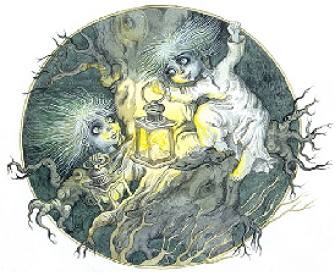
Ukrayinka also incorporated numerous other intriguing characters from Ukrainian mythology in Forest Song that did not make it into the film. These include the Zlydni, spirits that embody human poverty and bring misfortune into homes; the Poterchata, who are souls of drowned, unbaptized children; and the Perelisnyk, an evil fire spirit that harms people by assuming the appearance of their loved ones.
At the same time, the film also introduces characters not present in the play. Frogkitty (жабокиць), Mavka's faithful and funny friend, has the characteristics of both a cat and a frog.
The filmmakers also paid special attention to the lynx, a rare animal included in the Red Data Book of Ukraine. The film’s website states that one of its missions is to support the charitable “Save the Lynx!” initiative, which aims to help lynx survive in Ukrainian forests.
The funds raised during the film’s campaign will be directed towards researching the Eurasian lynx population in Polissia. Upon completion of the research, work to improve the conditions in lynx habitats will begin.
Lynx in Ukraine primarily inhabit Volyn Oblast, which served as a significant source of inspiration for Forest Song. Located in northwestern Ukraine, Volyn Oblast boasts abundant forests, wetlands, and swamps, all of which influenced the geography and nature in Ukrayinka’s story.
Although the film retains certain aspects of Volyn Oblast’s landscape and nature, it also introduces mountains, which are not typically found in the flat terrain of Polissia, but rather in the Ukrainian Carpathians, in the southwest of the country.
If you're interested in reading Lesia Ukrayinka’s Forest Song, you can find a free English translation at this link.
As for viewing the animated film, you can check out the international screening schedule below. It is also regularly updated here.
- MENA – March 2
- France, Belgium – March 29
- Australia and New Zealand – April 6
- The Netherlands – April 19
- Italy – April 20
- Croatia, Bosnia and Herzegovina, Albania, North Macedonia, Kosovo – April 27
- Andorra, Spain, Mongolia – April 28
- Hungary, Portugal, Angola – May 4
- Romania, Fiji – May 5
- Bulgaria – June 9
- Vietnam – June 23
- Serbia, Montenegro – June 29
- Estonia, Latvia, Lithuania – July 14
- The Czech Republic and Slovakia – July 20
- The United Kingdom — 28 July
- Türkiye – August 25
- Germany, Austria, Switzerland – June 7 (*update)
- Poland — 4 August (*update)
- Greece, Cyprus – September 21
- Norway – October 17
Related:
- Nine powerful films about Ukraine to add to your watch list
- Eleven films about Euromaidan you can watch online
- Documentary about Ukrainian mothers of war selected to premiere at Tribeca Film Festival
- “Man with a Movie Camera”: One day of a 1920’s Ukrainian city in the early Soviet times
- Andrew Tkach’s film “Generation Maidan” and the cinematic propaganda war
- New version of Hunger for Truth, film about Holodomor& Ukrainian struggle for independence, now online
- UK film director drives to Donbas to film war, spends almost a year there
- Documentary “My Father” tells story of fallen war hero and helps heal wounds of war

